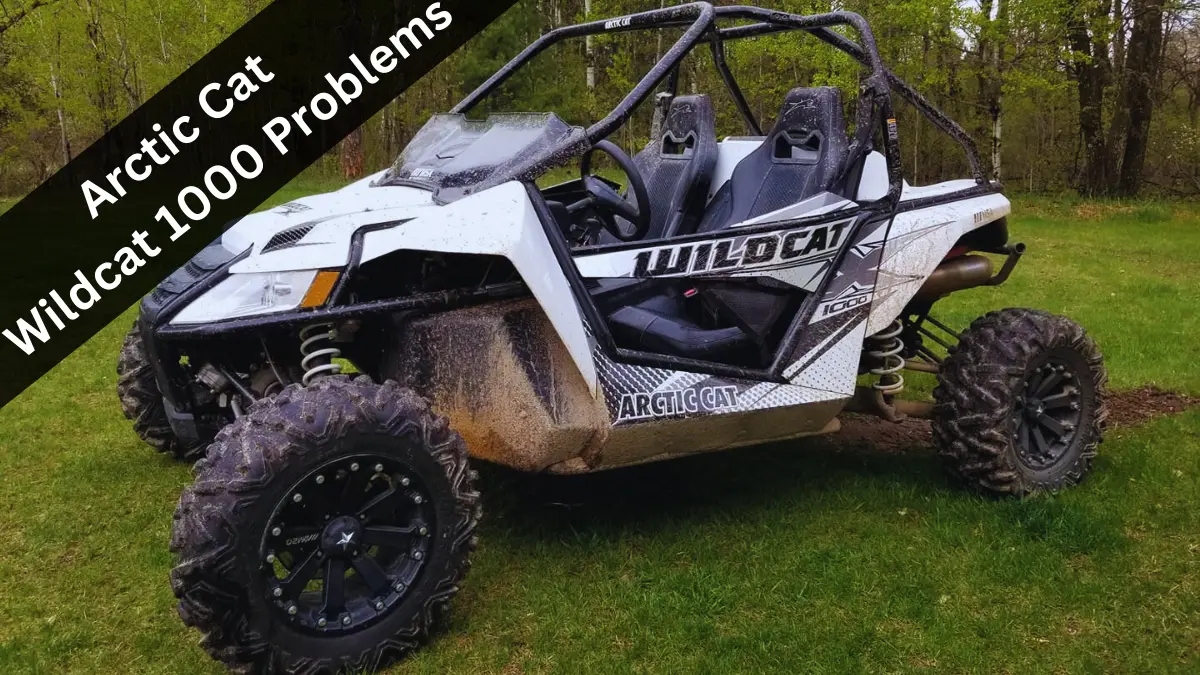If you read a review of the Arctic Cat Wildcat 1000, you’ll find that it’s looked at as one of the most underrated sport side-by-sides.
While it can’t quite keep up with the fastest side-by-sides in the industry, it’s pretty dang fast.
But while this model has quite a number of strengths, it also suffers from five common problems you should consider before buying one.
This guide will detail each of these problems, along with what causes them and proven ways to overcome them.
Starter and Starter Gears Failing
The most commonly reported issue with the Wildcat 1000 originates with the starter and starter gears.
This issue mainly affects the “X” models, as the stock starter gears are not strong enough to withstand the added horsepower and compression in these models, but does affect many pre-2016 Wildcat 1000 models as well.
The stock starter is known for being weak, and has a tendency to kick out of alignment causing it to quit engaging correctly and grind off the teeth of the starter, along with stripping the starter gears.
This usually culminates in a broken starter case, but the issue can even split the entire engine case, requiring a total replacement of the motor.
Needless to say, it can get expensive pretty quickly.
Fix
As Arctic Cat is well aware of the issue, they have created an upgraded starter kit that is available for purchase.
It is recommended that all owners proactively make this upgrade to their pre-2016 Wildcat 1000 models to avoid the headache that can ensue.
This starter kit greatly reduces the odds of this happening.
Steering Trouble
The steering is another common problem area in the Wildcat 1000.
Many of these issues originate with the steering slider that moves back and forth on two rods.
Many times the slider will develop a good bit of play versus these rods, or the bushings in the slider body will wear out with the slider binding as a result.
Additionally, for those who ride often in muddy terrain, the felt pad that fits between the slider and steering box is known to detach from the slider and wad up in these conditions.
This results in the Cat being much harder to steer.
Fixes
In the case of the slider having too much play versus the rods, it will likely need to be replaced or rebuilt.
If the bushings are worn out and causing the slider to bind, replacing the bushings and seals may be the only fix you need to make.
Either way, this tends to be a recurring problem with the steering.
With all of these flaws in mind, many owners upgrade to the 715 Wildcat steering system.
This upgrade resolves the issues with the slider, improves the turning radius, and make steering easier in all conditions.
Constant Rattling
You expect plenty of noise when out riding a side-by-side, but the Arctic Cat Wildcat 1000 can be on another level when it comes the rattling you can hear while driving it.
Even the rattling problem in the
And this rattling comes from a number of different areas on the vehicle, so it can be hard to pinpoint exactly what’s causing it.
The carrier bearing bracket that holds the front drive shaft seems to be the most common offender, but rattling can also come from the the suspension including the sway bar, front arms, shocks, and rear links.
Many times this rattling is due to loose or sloppy joints and bolts.
Fixes
To fix this, start by removing the carrier bearing bracket, wrapping it in some sort of tubing or noise cancelling material, and then reinstalling it.
You’ll also want to meticulously inspect each of the suspension parts mentioned above and ensure all of the bolts are tightened to spec. Feel free to apply some grease in these areas as well.
Or you could just upgrade your exhaust system, and you’ll never hear rattling (or anything else for that matter) again.
In all seriousness, rattling is just a part of owning a Wildcat 1000, and it’s unlikely you’ll ever get your side-by-side to the point where it doesn’t make at least a little of this noise while riding.
Speed Sensor Going Bad
Another common issue in the Wildcat 1000, especially in older models, is for the speed sensor to stop working correctly.
When this happens, you’ll experience any number of the following symptoms:
- Speedometer no longer displaying the speed
- Speedometer jumping wildly
- Power steering not working as it should
- Error codes C12312 and/or P0500 displaying
Fixes
If you’re experiencing the symptoms of a faulty speed sensor, the best course of action is to replace it with an new one.
When doing this, go ahead and apply some dielectric grease to the sensor plug, which should help to prolong the life of the new unit.
Engine Not Starting
Especially in some of the older models, you may find that your Wildcat 1000 won’t fire up at some point.
If you’re experiencing a no-start issue, there’s a good chance it’s due to one of the following components:
- Battery Terminals/Wiring
- Starter Solenoid
- Valves
- Spark Plugs
Battery Terminals/Wiring
If your engine won’t fire, start by inspecting the battery terminals and making sure they’re free of corrosion.
Even if they appear okay, give them a good cleaning and apply some dielectric grease to the terminals which will help prolong their lifespans.
Have a look at the ground wires that connect to the battery as well and make sure they’re connected properly.
The terminals and wiring are often the cause of no-start issues in this model, and will save you the trouble of taking more complicated steps to try and fix the machine if this is your problem.
Starter Solenoid
If all you hear is a clicking noise when you go to start your Cat, the starter solenoid may well be your problem.
Start by checking the connections to the solenoid to ensure they’re not loose, even retightening them even if they don’t appear to need it.
If there are no issues with these connections and the clicking persists, you should test your solenoid to see if it may be cooked.
Valves
The intake and exhaust valves may also be causing a no-start problem in your Wildcat 1000.
These valves can either tighten up or loosen up too much, both of which will affect the valve clearance enough to cause compression loss and the engine not to start.
Check each of these valves to make sure they’re set at the proper clearances per the owner’s manual, and adjust them if not.
Doing so has fixed many no-start issues in these models.
Spark Plugs
The spark plugs are another common cause of a no-start issue, so you should inspect them as well.
If they appear to be burnt or covered in oil, coolant, or fuel, you can be confident that replacing them may fix your issue.
If replacing your spark plugs, be sure and grab a high performance iridium plug as a replacement.
Parting Thoughts
While the Arctic Cat Wildcat 1000 has its issues, there aren’t many side-by-sides that don’t suffer from some of the same.
Even competitive models like the Yamaha RMAX 1000 and the Kawasaki KRX 1000 are plagued by some issues.
Point being, don’t let these issues scare you off of a good deal on one of the more underrated models in the industry.


